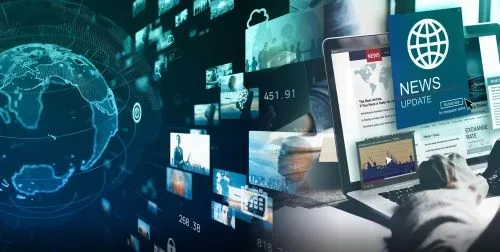Managing risk is a key facet of protecting your enterprise, and in a post-COVID world, amidst a worsening climate crisis, biorisk has become increasingly more important to your comprehensive risk management plan.
It’s easy for trending terms to become buzzwords that lack clear meanings – and the term “biorisk” is no exception. Understanding exactly what the term means is the first step in creating an effective biorisk management strategy. It’s also important to consider how biorisk might impact your enterprise, whether now or in the future.
What is a biorisk?
Biorisks fall into several broad categories, but they are all either infections themselves or events that drive up risk of infectious diseases. They can negatively impact your employees, your business continuity and your bottom line. We think about biorisks in four large categories:
- Infectious diseases such as winter respiratory viruses, Ebola viruses and stomach flu
- Environmental events such as heat waves, air quality problems and flooding
- Infrastructure events such as electrical grid outages and hospital evacuations
- Geopolitical events such as refugee movement and civil unrest
Each of these biorisk categories can create unhealthy environments that allow infectious diseases to grow and pose significant risk to humans.

How biorisk threatens workforce health
It’s clear to see how a local epidemic or global pandemic could impact the health of your employees. And of course, your team members won’t be able to work effectively while battling a serious illness. But some of the ways biorisk threatens the health of your workforce are less obvious.
First, consider how extreme climate events can impact workforce health through associated biorisks. When employees have damage to or lose their homes to flooding, for instance, they can face a cascade of health-related obstacles. They may immediately be exposed to intestinal viruses while fleeing in dirty water (ie norovirus). In some countries, even cholera flares during floods. Leptospirosis that causes fevers, jaundice, liver problems, and muscle pains comes from exposure to impure fresh water. Malaria and dengue infections carry increased risk during and after floods, particularly for those not in permanent housing. Fungi and molds grow in flooded buildings, so serious pneumonia and allergies can arise from those.
In addition, epidemic and pandemic diseases can have far-reaching, indirect health impacts even when your employees aren’t infected. Widespread infectious diseases can cause supply chain issues that obstruct your employees’ access to fresh food and prescription medication.
How biorisk threatens healthcare infrastructure
When hospitals and clinics are overcrowded due to events with significant biorisk, your employees may be unable to seek help for routine health problems. They may even experience delays in treatment for major problems such as stroke or heart attack. What does this mean for your business? Longer hospital stays and waiting times at the doctor’s office can spike your absenteeism rates.
Mental health services, already stretched in most areas, can become fully overwhelmed from biorisk events, like we have seen during the COVID-19 years. This happens just at the time when their expertise is needed to help heal from the collective trauma natural disasters, epidemics, or pandemics create.
Furthermore, when employees can’t get timely medical treatment for their health problems, they’re more likely to come to work sick. If they bring a contagious disease to work with them, your entire team is at risk. And when employees try to “push through” the workday with untreated medical conditions, their productivity will suffer.
How biorisk threatens business continuity
Biorisks can dramatically disrupt business continuity, in both surprising and expected ways. Of course, workforce absenteeism due to biological threats can limit your organization’s ability to get things done. But breakdowns in the supply chain caused by biorisks can also pose a significant threat to business continuity. Just as consumers encountered empty grocery store shelves at the beginning of the COVID-19 pandemic, business leaders were faced with supply shortages that hampered their local and global operations.
In addition, biorisks can limit your physical access to workplaces and worksites. From stay-at-home orders to public transportation shutdowns, a widespread infectious disease or other biological threat could bring your normal operations to a halt in countless ways.
How the PHC Global Threat Tracker helps you manage biorisks
You can’t eliminate the threat of biorisks to your business. However, the PHC Global Threat Tracker can help you with early warning and time to make adjustments to your business. You can track a single location – or all of them. Through the Pharos system, you will know when threat levels change and what strategies our experts recommend.
Request a demo to learn more about PHC Global and the PHC Pharos Platform.



